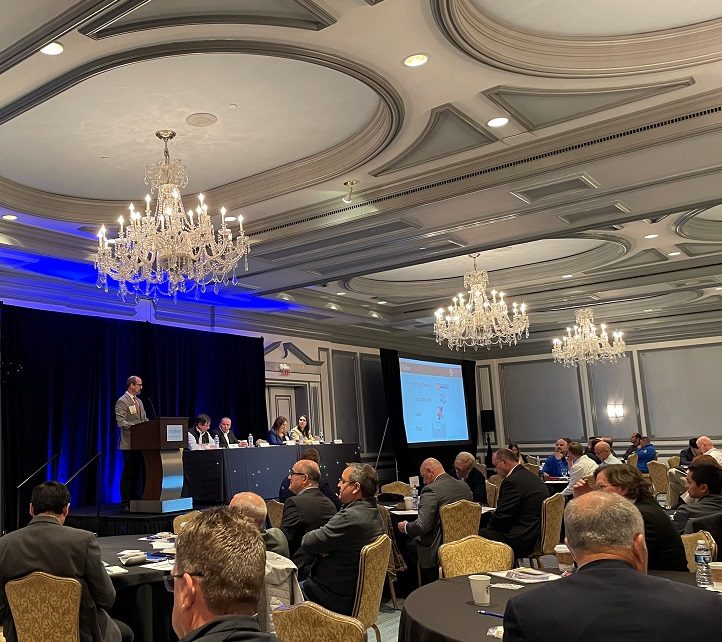Patience was the theme in Dearborn, Mich., in late October when Gerdau hosted speakers from the Center for Automotive Research (CAR), Wards Intelligence, Heavy Duty Manufacturers Association, Munro & Associates, American Axle, AGMA, and the company’s own Denise Correa De Oliveira for a comprehensive discussion on the present and future challenges facing the electric vehicle market.
The consensus among the speakers seemed to be that it would take at least three years to return to pre-pandemic levels of EV sales and production—and even by then the market will look different as smaller automakers will most likely join-up or consolidate with higher volume automakers and suppliers.
While COVID lockdowns, vulnerable markets and a potential global recession are still impeding future EV forecasts, it appears that pent-up demand and supply chain constraints—such as chip shortages—are easing. BEV forecasts, in fact, look to be rising from 1 in 20 sold to 1 in 4 sold in five years. Global sales will return to pre-pandemic levels thanks to China.
Manufacturers and engineers will either be thrilled or disappointed depending on your point of view to learn that the Tesla model of reducing the number of components in electric vehicles is still a growing trend in e-mobility. EVs will not need as many gears, bearings, or materials in the future, but must offer NVH, energy efficient and performance gains. In short, the gear and power transmission markets will make less components overall, but higher quality components.
Additionally, Cory Padfield, technical manager, materials engineering – R&D at American Axle, spoke about future gear coating treatments. Processes discussed included diamond-like carbon coating used to extend gear life. Lubrication—in general—is going through many changes in the e-mobility sector particularly the requirements needed to withstand higher temperatures for longer times compared to traditional axles.

AGMA’s own Mary Ellen Doran (pictured above), foundation executive director and director of emerging technologies, discussed AGMA’s electric vehicle committee work and reviewed a recent white paper “A Gearing-Centric Snapshot of the EV Space,” put together by the Electric Drive Technology Committee.
Gerdau ended the presentations with a closer look at the investments made to the company’s Monroe, Mich. facility including upgrades to the melting, rolling, casting, and finishing processes. The long-term objective here, according to Correa De Oliveira is to produce advancements in clean steel to support the growing—and changing—EV market. Gerdau continues to make significant strides in sustainable steel cleanliness. By utilizing enhanced melt practice developments and strict process controls, Gerdau is producing bearing quality steels in its continuous casters.
Clean steel refers to quality improvements thanks to chemistry and property control that limit nonmetallic inclusions. These steels can perform better in areas such as transportation, e-mobility and automotive. Gerdau has been focused on producing clean-steel technologies for many years and the company continues to search for innovative solutions for these changing industrial markets.
Gerdau’s special steel mills recycle high quality scrap metal into SBQ steel bars that are consumed by the automotive, heavy truck, agricultural and construction, oil/gas, and the energy markets. The process starts with melting scrap in an electric arc furnace, refining, degassing, casting, rolling, and finishing. Learn more about Gerdau's path to clean and green steel for the EV market here:







